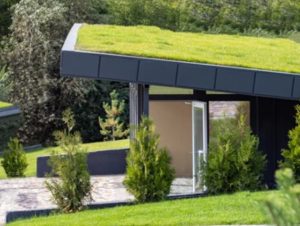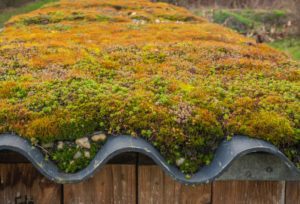In the quest for sustainable and eco-friendly practices, businesses increasingly turn to innovative solutions to transform their urban environments. One such trend gaining momentum is the development of living roofscapes – green spaces created on building rooftops. This revolutionary approach enhances the aesthetic appeal of commercial properties and contributes significantly to environmental sustainability. This blog post will explore the burgeoning trend of living roofscapes, emphasizing their benefits, successful implementations, and key considerations for businesses embracing this eco-friendly practice.

The Rise of Living Roofscapes
Living roofscapes are rooted in the need for sustainable urban development. As cities expand, green spaces diminish, contributing to the heat island effect and impacting air quality. Living roofscapes address these issues by transforming underutilized rooftop spaces into thriving ecosystems. This trend has gained traction for its environmental benefits and its positive impact on the occupants and the community.

Benefits of Living Roofscapes
- Environmental Impact:
- Biodiversity: Living roofscapes provide habitat for plants, birds, and insects, promoting biodiversity in urban areas.
- Air Quality: Plants on rooftops absorb pollutants and release oxygen, contributing to improved air quality.
- Stormwater Management: Green roofs absorb rainwater, reducing runoff and alleviating pressure on stormwater systems.
- Sustainability:
- Energy Efficiency: Green roofs act as natural insulators, reducing the need for artificial heating and cooling and, consequently, lowering energy consumption.
- Carbon Sequestration: Plants absorb carbon dioxide, mitigating the carbon footprint of buildings and contributing to climate change mitigation.
- Insulation:
- Temperature Regulation: Living roofscapes provide insulation, reducing indoor temperature fluctuations and improving energy efficiency.
- Longevity: The added layer of vegetation protects the roof membrane from the elements, extending the roof’s lifespan.
- Aesthetic Appeal:
- Urban Oasis: Transforming rooftops into green spaces creates aesthetically pleasing environments, enhancing the overall appeal of commercial properties.
- Employee Well-being: Access to green spaces has been linked to improved mental health and well-being, making living roofscapes valuable for employee satisfaction.

Successful Implementations
- Chicago City Hall, Chicago, Illinois:
- The Chicago City Hall boasts an award-winning rooftop garden, showcasing the city’s commitment to sustainability.
- The green roof has helped reduce energy consumption and has become a symbol of environmental stewardship.
- The Edge, Amsterdam, Netherlands:
- The Edge, a futuristic office building, features a vast living rooftop with solar panels and a rainwater harvesting system.
- Integrating green technology and living roof elements has earned it recognition as one of the world’s greenest buildings.
- California Academy of Sciences, San Francisco, California:
- This iconic building in Golden Gate Park features a living roof with over 1.7 million native plants.
- The roof not only provides insulation but also serves as an educational tool, showcasing sustainable design to visitors.

Key Considerations for Businesses
- Environmental Impact Assessment:
- Before implementing a living roof, businesses should conduct a thorough environmental impact assessment to ensure compatibility with local ecosystems.
- Cost Considerations:
- While initial costs may be higher, businesses should consider the long-term savings in energy and maintenance costs and potential tax incentives for green initiatives.
- Structural Considerations:
- Ensure that the building structure can support the added weight of the green roof and that proper waterproofing is in place to prevent leaks.

Case Studies in Cost-Effective Sustainability
- IKEA Brooklyn, New York:
- IKEA transformed the rooftop of its Brooklyn store into a solar-powered green space.
- The dual-purpose rooftop is a community garden and energy source, showcasing a cost-effective and sustainable approach.
- Ford Rouge Center, Dearborn, Michigan:
- Ford’s roof on its Rouge Center helps manage stormwater and reduce energy consumption.
- The cost savings from reduced energy use and improved insulation contribute to the project’s economic viability.
Living roofscapes represent a transformative approach to urban sustainability, offering myriad benefits to businesses and the environment. The advantages are undeniable, from enhanced insulation and energy efficiency to improved air quality and aesthetic appeal. As the trend continues to gain momentum, businesses exploring the implementation of living roofscapes should carefully consider the environmental impact, cost considerations, and structural requirements. By embracing this green revolution, businesses contribute to a healthier planet and create inviting and inspiring spaces for their employees and communities. Living roofscapes are not just a trend; they are a testament to the power of innovative thinking in pursuing a more sustainable future.